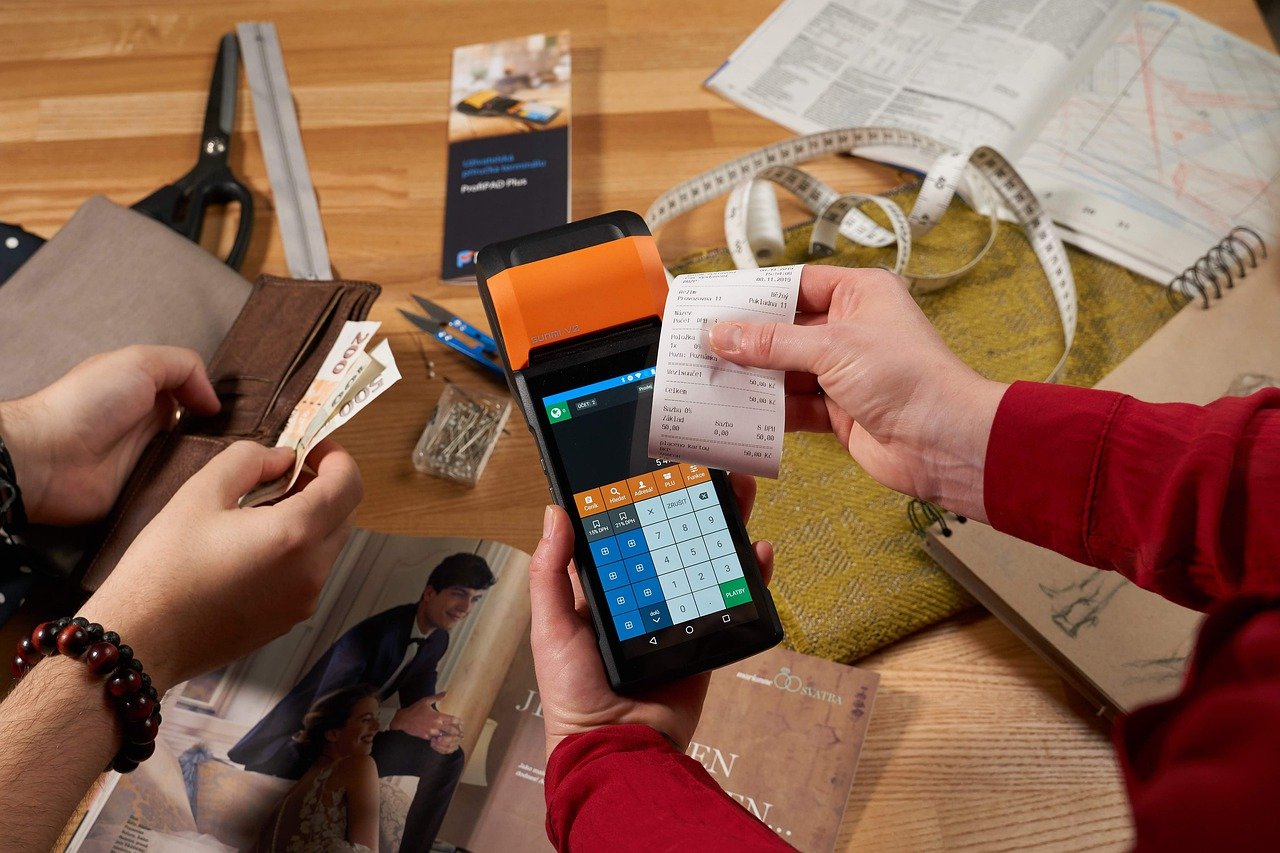
Idea
Long checkout lines at grocery stores are a common frustration for many shoppers.
Customers often have to wait in line for an extended period, leading to dissatisfaction and wasted time.
To solve this issue, a potential startup idea could be the development of a mobile self-checkout app.
This app would allow customers to scan items as they shop, pay through the app, and simply show a digital receipt to a store employee to exit.
This would streamline the checkout process, reduce wait times, and improve the overall shopping experience.
The app could also offer promotions, loyalty programs, and personalized recommendations, enhancing customer engagement.
With the rise of contactless payment methods and the increasing use of smartphones, there is a growing demand for convenient and efficient checkout solutions.
Branding
- QuickScan
- Domain: quickscanapp.com
- ShopFlow
- Domain: shopflowapp.com
- SwiftCart
- Domain: swiftcart.io
- CheckoutEase
- Domain: checkoutease.com
- ScanSwift
- Domain: scanswiftapp.com
- SpeedyCheckout
- Domain: speedycheckout.co
- CheckOutQuickly
- Domain: checkoutquicklyapp.com
- GoShopEasy
- Domain: goshopeasy.io
- SwiftScan
- Domain: swiftscanapp.co
- EasyCheckOut
- Domain: easycheckoutapp.com
Elevator Pitch
Introducing QuickScan – the ultimate solution to long grocery store checkout lines.
With our innovative mobile self-checkout app, you can scan items as you shop, pay through the app, and breeze through the store with just a digital receipt.
Say goodbye to waiting in line and hello to a smoother shopping experience. QuickScan: Shop. Scan. Go!
Industry Insights
With the changing landscape of retail and the increasing reliance on technology, the grocery industry is constantly evolving to meet consumer demands.
Long checkout lines have been a persistent pain point for shoppers, leading to frustration and a less than optimal shopping experience.
In response to this growing need for efficiency and convenience, the concept of a mobile self-checkout app has the potential to revolutionize the way customers interact with grocery stores.
- ????Mobile self-checkout apps align with the trend towards contactless payment methods and the use of smartphones for everyday tasks.
- ⏱️By allowing customers to scan items as they shop and pay through the app, the checkout process is streamlined, reducing wait times and improving customer satisfaction.
- ????In addition to enhancing the overall shopping experience, mobile self-checkout apps can offer promotions, loyalty programs, and personalized recommendations to increase customer engagement and loyalty.
As grocery stores continue to adapt to changing consumer preferences and technological advancements, the development of a mobile self-checkout app presents a promising opportunity to address a longstanding pain point in the shopping experience.
SWOT Analysis
-
Strengths:
- Addresses a common frustration for shoppers
- Streamlines the checkout process
- Reduces wait times
- Improves overall shopping experience
- Potential for customer engagement through promotions and recommendations
-
Weaknesses:
- Dependence on smartphone technology
- Requires stores to implement new infrastructure for app integration
- Potential for technical glitches or system failures
-
Opportunities:
- Increasing demand for convenient checkout solutions
- Growing trend towards contactless payment methods
- Potential for expansion into other retail sectors
-
Threats:
- Competition from established self-checkout systems
- Concerns over security and privacy of payment information
- Resistance from traditional shoppers who prefer human interaction at checkout
PESTEL Analysis
PESTEL analysis is a strategic tool used to identify the external factors that can impact a business or a startup.
It stands for Political, Economic, Social, Technological, Environmental, and Legal factors that can affect the operation of the business.
Let’s analyze how these factors can influence the potential mobile self-checkout app startup idea:
- Political: Political stability and government regulations can play a crucial role in the success of the app. Government policies on data privacy, consumer protection laws, and regulations related to digital payments can impact the operations of the app.
- Economic: Economic factors such as inflation, disposable income levels of customers, and overall economic conditions can affect the adoption of the app. A stable economy with high consumer spending can be favorable for the app’s success.
- Social: Changing consumer behavior and preferences, such as the increasing use of smartphones for shopping, can create opportunities for the app. Demographic trends, cultural aspects, and societal norms regarding technology adoption can also influence the app’s reception.
- Technological: The rapid advancement in technology, particularly in mobile devices and digital payment systems, is a significant opportunity for the app. Integration with existing POS systems, cybersecurity measures, and the ability to adapt to emerging technologies are key considerations.
- Environmental: Environmental concerns, such as sustainability and reducing paper waste, can be addressed through the digital receipt feature of the app. Green initiatives and eco-friendly practices can appeal to environmentally-conscious consumers.
- Legal: Compliance with data protection laws, intellectual property rights, and regulations related to financial transactions are essential for the app’s legality. Ensuring legal compliance in all operational aspects is crucial for long-term viability.
Market Research
According to recent studies, the average time spent waiting in checkout lines at grocery stores is approximately 10-15 minutes, contributing to customer dissatisfaction and impeding the overall shopping experience.
This presents a significant opportunity for innovative solutions to streamline the checkout process and improve customer satisfaction.
Industry Trends
- The grocery industry is experiencing a shift towards digitalization and contactless payment methods, with an increasing number of consumers seeking convenient and efficient shopping experiences.
- Mobile self-checkout apps are gaining popularity in retail settings, providing customers with a seamless checkout experience and reducing operational costs for businesses.
- Market research indicates a growing demand for personalized shopping experiences, including targeted promotions and loyalty programs that can enhance customer engagement and retention.
Competitive Analysis
A competitive analysis reveals that several grocery chains have already implemented self-checkout kiosks in their stores, but there is still a lack of mobile self-checkout apps that offer a comprehensive solution for reducing wait times and improving the overall shopping experience.
This presents a unique opportunity for our proposed mobile self-checkout app to differentiate itself in the market.
Consumer Feedback
Survey data collected from grocery store customers indicates a high level of interest in a mobile self-checkout app that would allow them to scan items as they shop, pay through the app, and avoid long checkout lines.
Customers expressed a desire for a convenient and time-saving solution that would enhance their overall shopping experience.
Business One Page
Long checkout lines at grocery stores are a common frustration for many shoppers.
Customers often have to wait in line for an extended period, leading to dissatisfaction and wasted time.
To solve this issue, a potential startup idea could be the development of a mobile self-checkout app.
This app would allow customers to scan items as they shop, pay through the app, and simply show a digital receipt to a store employee to exit.
This would streamline the checkout process, reduce wait times, and improve the overall shopping experience.
The app could also offer promotions, loyalty programs, and personalized recommendations, enhancing customer engagement.
With the rise of contactless payment methods and the increasing use of smartphones, there is a growing demand for convenient and efficient checkout solutions.
Product Requirements Document (PRD)
Executive Summary
The mobile self-checkout app aims to revolutionize the grocery shopping experience by reducing wait times and enhancing customer satisfaction through a convenient and efficient checkout process.
Introduction
The purpose of this PRD is to outline the requirements and features of the mobile self-checkout app to address the problem of long checkout lines in grocery stores.
Goals and Objectives
- Reduce checkout wait times by at least 50%
- Improve customer satisfaction and shopping experience
- Increase store efficiency and revenue
User Personas
The app will target busy professionals, parents with young children, and tech-savvy individuals who value convenience and time-saving solutions.
Use Cases
1. User scans items while shopping 2. User pays through the app 3. User shows digital receipt to exit store
Features & Requirements
- Barcode scanning capability
- Secure payment processing
- Integration with store inventory systems
- Promotions and loyalty program functionality
User Interface (UI) Design
The UI will be intuitive, user-friendly, and visually appealing to ensure a seamless checkout experience for customers.
Assumptions and Constraints
Assumes a stable internet connection and availability of smartphones among target users. Constraints include hardware compatibility and store infrastructure limitations.
Dependencies
Dependent on cooperation from grocery stores for implementation and adoption of the app by customers.
Technical Specifications
Compatibility with iOS and Android operating systems, compliance with payment security standards, and integration with store POS systems.
Timeline and Milestones
Development: 6 months Launch: Q1 of next year Milestone: 1000 app downloads within the first month
Risks and Mitigation
Risk: Low customer adoption Mitigation: Marketing campaigns and incentives to encourage app usage
Path to MVP ????
In order to bring the idea of a mobile self-checkout app from concept to reality, several key steps must be taken to develop a Minimum Viable Product (MVP).
The MVP is a version of the product with enough features to capture early adopters’ feedback and validate the idea while minimizing development costs and time.
Market Research ????:
Conduct in-depth market research to understand customer needs, preferences, and pain points related to checkout processes in grocery stores.
Identify target demographics and market trends to tailor the app to meet specific user requirements.
Feature Prioritization ????:
Define the core features of the app that are essential for a minimal viable product, such as item scanning, payment integration, digital receipts, and basic account creation.
Prioritize these features based on their impact on the user experience and feasibility of implementation.
Prototype Development ????️:
Create a basic prototype of the mobile self-checkout app to visualize the user interface, navigation flow, and functionality.
Use prototyping tools to iterate quickly and gather feedback from potential users, stakeholders, and investors.
Testing and Iteration ????:
Conduct usability testing with a select group of users to gather feedback on the app’s usability, performance, and overall experience.
Iterate on the prototype based on user feedback to refine features, fix issues, and optimize the app for a better user experience.
Launch Strategy ????:
Develop a comprehensive launch strategy to introduce the MVP to a limited audience, gather feedback, and measure key performance indicators.
Implement marketing tactics to attract early adopters, generate buzz, and create awareness of the app’s value proposition.
Marketing Plan
Developing a strong marketing plan is essential to the success of the mobile self-checkout app. Here are key strategies that can be implemented:
Target Audience:
The primary target audience for the app would be tech-savvy individuals who value convenience and efficiency.
This includes busy professionals, young adults, and parents looking to streamline their grocery shopping experience.
Brand Awareness:
A comprehensive brand awareness campaign should be launched to introduce the app to potential users.
This can include social media promotions, influencer collaborations, and targeted advertising to reach the desired demographic.
Promotions and Discounts:
Offering exclusive promotions and discounts to early adopters can help generate interest and encourage trial of the app.
This could include discounts on the first purchase, referral bonuses, or special offers for regular users.
Partnerships:
Forming partnerships with grocery chains and retailers to integrate the app into their stores can help expand the reach of the app.
Collaborations with popular brands can also help attract a larger user base.
User Engagement:
To retain users and build loyalty, the app should focus on enhancing user engagement.
This can be achieved through personalized recommendations, interactive features, and rewards programs to incentivize continued usage.
Go to Market Strategy
Launching a mobile self-checkout app in the competitive retail market requires a strategic approach to effectively reach and acquire customers.
The following go-to-market strategy outlines key steps to successfully introduce the app to the target market:
Market Research:
Conduct in-depth market research to identify target demographic, shopping behaviors, and preferences.
Understand competitor offerings and customer pain points to position the app effectively.
Partnerships:
Collaborate with grocery store chains to integrate the app into their existing systems.
Establish partnerships with payment processors and security providers to ensure seamless transactions and data protection.
Marketing and Promotion:
Develop a comprehensive marketing campaign to create awareness and generate interest in the app.
Utilize social media, influencer marketing, and email campaigns to engage potential users.
User Experience:
Prioritize user experience design to create an intuitive and user-friendly interface.
Conduct testing and gather feedback to refine the app and ensure a seamless checkout process.
Customer Support:
Implement a responsive customer support system to address any issues or concerns users may have.
Provide multiple channels for assistance, including live chat, email, and phone support.
Feedback and Iteration:
Continuously gather user feedback and data analytics to identify areas for improvement.
Stay agile and iterate on features to enhance the app’s functionality and user satisfaction.


